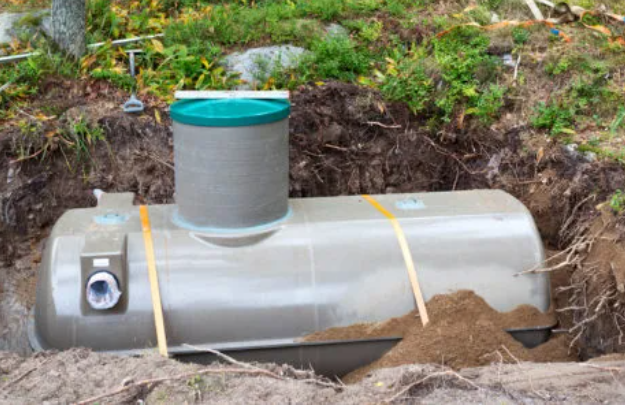Septic Tank Cleaning Secrets: 10 Expert Tips That Prevent Costly Disasters
Picture this: It’s a beautiful Saturday morning, you’re sipping coffee on your back porch, when suddenly you notice a suspicious odor wafting through the air. Your neighbor’s septic system has failed catastrophically, and raw sewage is bubbling up through their pristine lawn like a nightmare fountain. The cleanup costs? Over $15,000. The embarrassment? Priceless. But here’s the kicker – this disaster could have been completely prevented with proper septic tank cleaning and maintenance. Don’t let this horror story become your reality!
Welcome to the definitive guide that will transform you from a septic system novice into a confident homeowner who knows exactly how to keep their waste management system purring like a well-tuned engine. Whether you’re dealing with your first septic tank pumping schedule or you’re a seasoned rural homeowner looking to optimize your maintenance routine, this comprehensive guide will equip you with the knowledge and confidence to protect one of your home’s most critical – yet often overlooked – systems.
Understanding Your Septic System: The Foundation of Proper Maintenance
Before diving into the essential cleaning tips, let’s demystify your septic system. Think of your septic tank as your home’s personal wastewater treatment plant – a sophisticated biological ecosystem working 24/7 beneath your property. This underground marvel consists of several key components that work in harmony to process and filter your household waste.
The primary septic tank serves as the first stop for all wastewater leaving your home. Here, solids settle to the bottom forming sludge, oils and grease float to the top creating scum, and the middle layer contains partially clarified water called effluent. Beneficial bacteria work tirelessly to break down organic matter, making proper septic tank bacteria maintenance crucial for optimal system performance.
“Most homeowners don’t realize that their septic system is essentially a living ecosystem. The bacteria inside your tank are working around the clock to digest waste, and disrupting this delicate balance through harsh chemicals or neglect can lead to system failure costing thousands to repair.” – Dr. Sarah Mitchell, Environmental Engineer and Septic System Specialist
Understanding your septic system’s capacity is equally important. Most residential systems range from 750 to 1,500 gallons, with the size determined by your home’s bedroom count and expected water usage. This knowledge becomes crucial when planning your septic tank cleaning frequency and managing household water consumption.
The Critical Importance of Regular Septic Tank Cleaning
Regular septic tank cleaning isn’t just about preventing embarrassing backups – it’s about protecting your investment, safeguarding your family’s health, and preserving your property value. A well-maintained septic system can last 25-30 years, while a neglected one might fail in just 10-15 years, creating a financial nightmare that could have been easily avoided.
The economic benefits of consistent septic maintenance are staggering. Consider that a complete system replacement can cost anywhere from $10,000 to $25,000, while regular professional septic tank pumping typically costs between $200 and $500 every three to five years. The math is simple – preventive maintenance saves you thousands in the long run.
Beyond financial considerations, proper septic tank cleaning protects groundwater quality and prevents environmental contamination. When septic systems fail, untreated wastewater can seep into local water supplies, creating health hazards for entire communities. By maintaining your system properly, you’re not just protecting your family – you’re being a responsible environmental steward.
“In my 20 years of septic system inspection and repair, I’ve seen countless homeowners save tens of thousands of dollars simply by following a regular pumping schedule. The families who treat their septic system like they treat their car – with regular maintenance – rarely face major repairs.” – Mike Rodriguez, Licensed Septic Contractor
Recognizing the Warning Signs: When Your Septic Tank Needs Immediate Attention
Your septic system will always give you warning signs before a catastrophic failure occurs – the key is knowing how to recognize these red flags before they become expensive emergencies. Learning to identify these septic tank warning signs can save you from the nightmare scenario we described earlier.
Slow Draining Fixtures: When multiple drains throughout your home start draining slowly simultaneously, this often indicates your septic tank is reaching capacity. While a single slow drain might be a localized clog, system-wide drainage issues typically point to septic problems requiring immediate attention.
Unusual Odors: Persistent sewage odors around your drain field, septic tank area, or even inside your home are clear indicators that your system needs professional evaluation. These odors often indicate that waste isn’t being properly processed or that gases are escaping from compromised system components.
Gurgling Sounds: Strange gurgling noises coming from drains, especially when you flush toilets or run water, suggest that air is trapped in your plumbing system due to septic backup or blockages.
Pooling Water: Standing water or unusually lush, green grass over your drain field area indicates that effluent isn’t being properly absorbed into the soil. This soggy ground septic problem can quickly escalate into a complete system failure if not addressed promptly.
“The biggest mistake I see homeowners make is ignoring early warning signs. By the time sewage is backing up into their house, we’re usually looking at emergency repairs costing thousands instead of routine maintenance costing hundreds.” – Jennifer Thompson, Certified Septic System Inspector
High Nitrate Levels in Well Water: If you have a private well, elevated nitrate levels in your water testing could indicate septic system contamination of your groundwater supply – a serious health and environmental concern requiring immediate professional intervention.
Determining the Right Septic Tank Pumping Schedule for Your Home
One of the most common questions homeowners ask is, “How often should I pump my septic tank?” The answer isn’t one-size-fits-all – it depends on several crucial factors that smart homeowners learn to evaluate.
The general rule of thumb suggests septic tank pumping every 3-5 years, but this baseline recommendation requires customization based on your specific circumstances. A household of two people with a 1,000-gallon tank might comfortably wait five years between pumpings, while a family of six with the same tank capacity should consider pumping every two to three years.
Household Size Impact: More people means more wastewater, faster sludge accumulation, and more frequent cleaning requirements. Each additional person in your home can reduce your pumping interval by six months to a year.
Water Usage Patterns: High-efficiency appliances, water conservation habits, and mindful usage can extend your pumping intervals. Conversely, frequent laundry loads, long showers, and water-intensive activities accelerate the need for professional septic services.
Garbage Disposal Usage: Homes with garbage disposals typically need septic tank cleaning 50% more frequently because food waste significantly increases the organic load in your system.
“I always tell my clients to keep a simple log of their family’s water usage patterns and any changes in household size. This information helps me recommend the perfect pumping schedule that maximizes system efficiency while minimizing costs.” – Robert Chen, Licensed Septic Professional
Creating a personalized septic maintenance schedule involves tracking these variables and adjusting accordingly. Start with the standard recommendation for your tank size and household, then modify based on your actual usage patterns and system performance.
DIY Septic Tank Maintenance: What You Can Safely Do Yourself
While professional septic tank pumping should always be left to licensed contractors, there are numerous DIY septic maintenance tasks that can significantly extend your system’s life and reduce professional service costs. These proactive steps empower homeowners to take control of their septic system health.
Water Conservation Strategies: Implementing smart water usage habits is perhaps the most impactful DIY maintenance you can perform. Fix dripping faucets immediately, install low-flow fixtures, and spread laundry loads throughout the week instead of doing multiple loads in one day. These simple changes reduce the hydraulic load on your system, allowing beneficial bacteria more time to process waste effectively.
Proper Waste Disposal Habits: What goes down your drains directly impacts your septic system’s health. Avoid flushing non-biodegradable items like feminine hygiene products, medications, cigarette butts, or cat litter. These materials can clog your system or disrupt the bacterial balance essential for proper waste decomposition.
Beneficial Bacteria Addition: Monthly addition of septic-safe bacterial supplements can enhance your system’s natural waste processing capabilities. These products introduce additional beneficial microorganisms that help break down organic matter more efficiently, potentially extending the time between professional pumpings.
Regular Visual Inspections: Monthly visual inspections of your drain field and septic tank area can help you identify potential problems before they become expensive emergencies. Look for standing water, unusual vegetation growth, or ground subsidence that might indicate system problems.
“The homeowners who have the healthiest septic systems are those who treat maintenance as an ongoing responsibility rather than something they only think about when problems arise. Simple daily habits make the biggest difference in system longevity.” – Lisa Parker, Septic System Educator
Chemical-Free Cleaning Products: Switching to septic-safe cleaning products protects the beneficial bacteria in your tank while maintaining your home’s cleanliness. Look for biodegradable, phosphate-free cleaners that won’t disrupt your system’s delicate biological balance.
Professional Septic Services: When to Call the Experts
While DIY maintenance plays a crucial role in septic system care, certain tasks require professional expertise and specialized equipment. Understanding when to call professional septic services can prevent minor issues from becoming major catastrophes and ensure your system receives the expert care it deserves.
Septic Tank Pumping: This is the most critical professional service your system requires. Licensed septic contractors have the specialized vacuum trucks, safety equipment, and expertise to safely remove accumulated sludge and scum from your tank. They can also inspect your system during pumping, identifying potential problems before they cause failures.
System Inspections: Professional septic inspections should occur every 3-5 years, typically coinciding with pumping services. These comprehensive evaluations assess tank condition, baffle integrity, pipe connections, and drain field performance. Early detection of issues during professional inspections can save thousands in repair costs.
Drain Field Maintenance: When your drain field shows signs of failure – standing water, odors, or sewage surfacing – professional intervention becomes essential. Drain field repair or replacement requires permits, specialized equipment, and expert knowledge of soil conditions and local regulations.
“I’ve been in the septic business for 25 years, and I can tell you that the cost of regular professional maintenance is always a fraction of emergency repair costs. Homeowners who invest in professional services every few years rarely face major system failures.” – David Martinez, Master Septic Contractor
Emergency Services: When septic emergencies strike – sewage backups, system overflows, or complete failures – immediate professional response can minimize damage and health hazards. Emergency septic services often include temporary solutions while planning permanent repairs.
Choosing the right septic service provider involves verifying licenses, checking references, and ensuring they carry proper insurance. Quality contractors will provide detailed estimates, explain recommended services, and offer maintenance plans to keep your system running smoothly.
Avoiding Costly Septic System Mistakes: Learn from Others’ Expensive Errors
Learning from common septic system mistakes can save you thousands of dollars and prevent the embarrassment of system failures. These costly errors are entirely preventable with proper knowledge and planning.
Delaying Professional Pumping: The most expensive mistake homeowners make is postponing septic tank pumping to save money. This penny-wise, pound-foolish approach often results in system failures costing 10-50 times more than regular maintenance. When sludge levels become too high, solids can escape into your drain field, causing permanent damage requiring complete system replacement.
Using Harsh Chemicals: Many homeowners unknowingly damage their septic systems by using bleach, antibacterial soaps, or harsh drain cleaners that kill beneficial bacteria. Without these essential microorganisms, waste doesn’t decompose properly, leading to rapid sludge accumulation and system failure.
Overloading the System: Doing multiple loads of laundry in one day, taking excessive long showers, or having house guests without adjusting usage patterns can hydraulically overload your system. This forces untreated wastewater into your drain field before proper processing, potentially causing permanent damage.
“The most heartbreaking calls I receive are from homeowners who tried to save a few hundred dollars on pumping and ended up needing a $20,000 system replacement. Regular maintenance isn’t an expense – it’s insurance against catastrophic failure.” – Angela Foster, Septic System Consultant
Ignoring Warning Signs: Procrastination in addressing early warning signs transforms minor issues into major problems. Strange odors, slow drains, or soggy areas around your drain field require immediate attention – not “when you get around to it” responses.
DIY Repairs Beyond Your Skill Level: While homeowner maintenance is valuable, attempting complex repairs without proper training and equipment often causes more damage than the original problem. Septic work involves health hazards, environmental regulations, and technical complexities requiring professional expertise.
Environmental Responsibility: Protecting Our Water Resources Through Proper Septic Care
Your septic system’s environmental impact extends far beyond your property boundaries. Proper septic tank environmental protection practices safeguard groundwater quality, protect local ecosystems, and preserve water resources for future generations.
When septic systems fail or function improperly, untreated wastewater can contaminate groundwater supplies, affecting drinking water for entire communities. Nitrogen and phosphorus from failing systems contribute to algae blooms in nearby lakes and streams, creating environmental dead zones that harm aquatic life.
Groundwater Protection: Your septic system serves as a critical barrier between household waste and groundwater supplies. Proper maintenance ensures this protection remains effective, preventing contamination of wells and aquifers that communities depend on for clean drinking water.
Soil Health Preservation: A well-functioning drain field actually improves soil health by providing beneficial nutrients while filtering out harmful pathogens. Overloaded or failing systems can saturate soil with excess nutrients, disrupting local ecosystem balance.
“Every properly maintained septic system is an environmental success story. These systems, when cared for correctly, can actually improve local water quality by filtering and processing waste naturally. It’s a perfect example of human technology working in harmony with natural processes.” – Dr. Karen Williams, Environmental Scientist
Sustainable Practices: Incorporating eco-friendly septic maintenance practices benefits both your system and the environment. Using biodegradable cleaning products, conserving water, and properly disposing of household chemicals all contribute to better environmental outcomes.
Consider your septic system as part of your home’s environmental footprint. Responsible maintenance demonstrates environmental stewardship while protecting your investment and community water resources.
Understanding Septic Tank Cleaning Costs: Budget Planning for System Maintenance
Understanding septic tank cleaning costs helps homeowners budget effectively for system maintenance while avoiding surprise expenses. Smart financial planning for septic care prevents maintenance deferrals that lead to expensive emergency repairs.
Professional Pumping Costs: Standard septic tank pumping typically ranges from $200-$500, depending on tank size, accessibility, and regional pricing. This investment every 3-5 years prevents thousands in potential repair costs, making it one of the best maintenance values for homeowners.
Factors Affecting Pricing: Several variables influence septic service costs. Tank accessibility affects pricing – systems requiring longer hoses or difficult access cost more to service. Tank size directly impacts costs, with larger systems requiring more time and disposal fees. Regional pricing variations reflect local labor costs and disposal facility fees.
Additional Services: Comprehensive septic inspections add $100-$300 to basic pumping costs but provide valuable system health assessments. Drain field inspections, bacteria treatments, and filter cleaning represent additional services that enhance system performance.
“I always tell homeowners to view septic maintenance as home insurance. You pay small amounts regularly to avoid catastrophic expenses later. The families who budget $100-150 annually for septic care rarely face major repair bills.” – Tom Anderson, Septic Service Business Owner
Long-term Financial Benefits: Regular maintenance extends system life from 15-20 years to 25-30 years, representing thousands in avoided replacement costs. Property values also benefit from well-maintained septic systems, as buyers increasingly recognize the importance of properly functioning waste management systems.
Emergency vs. Preventive Costs: Emergency septic services cost 2-3 times more than scheduled maintenance, often requiring immediate response fees and weekend or holiday surcharges. Planning ahead eliminates these premium costs while ensuring better service quality.
Conclusion: Your Path to Septic System Success
Congratulations! You’ve now gained the knowledge and confidence to transform your approach to septic system care from reactive crisis management to proactive system optimization. The ten essential tips we’ve covered – from understanding your system’s biological processes to budgeting for professional services – provide a comprehensive roadmap for maintaining a healthy, efficient septic system that will serve your family for decades.
Remember, your septic system is more than just a waste disposal method – it’s a sophisticated biological treatment facility that, when properly maintained, protects your family’s health, preserves your property value, and safeguards environmental water resources. The small investments you make in regular maintenance and professional services today will save you thousands in emergency repairs tomorrow.
The path forward is clear: implement water conservation strategies, schedule regular professional pumping, monitor your system for warning signs, and treat your septic system with the respect and care it deserves. Your future self – and your bank account – will thank you for the proactive approach you’re taking today.
“The homeowners who succeed with septic systems are those who understand that maintenance is an investment, not an expense. Every dollar spent on proper care returns ten dollars in avoided problems. Start today, and your system will reward you with decades of trouble-free operation.” – Rebecca Johnson, Senior Septic System Specialist
Take action today by scheduling your next professional inspection if it’s been more than three years since your last service. Create a maintenance calendar, implement the water conservation strategies we’ve discussed, and most importantly, share this knowledge with friends and neighbors who might benefit from these insights.
Your septic system has been working quietly and efficiently in the background – now it’s time to give it the attention and care it deserves. With the knowledge you’ve gained from this guide, you’re equipped to ensure your septic system remains healthy, happy, and fully functional for many years to come.




